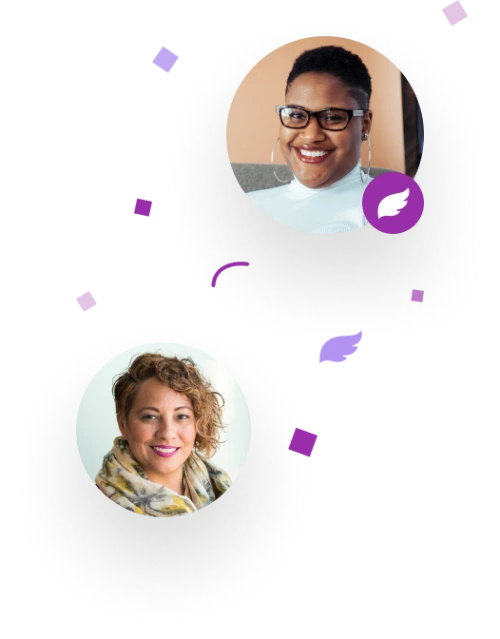NY Times Series: 7 Issues Facing Women - A Beauty Double Standard (Day 7 of 7)
DAY 7 | BY CORINNE PURTILL
A Beauty Double Standard
Among the disclosures in Michelle Obama’s 2018 memoir, “Becoming,” was the former first lady’s acknowledgment that a polished and professional-looking woman does not, in fact, wake up that way.
While her husband faced the world each day without so much as reaching for a comb, according to the book, Ms. Obama prepared for every public appearance knowing that no aspect of her visible self would escape scrutiny. Hours of hair and makeup prep were factored into an already-crammed schedule, and the salaries of the fashion stylist Meredith Koop, hairdresser Johnny Wright, and makeup artist Carl Ray into her personal budget.
“I never expected to be someone who hired others to maintain my image, and at first the idea was discomfiting,” she wrote. “But I quickly found out a truth that no one talks about: Today, virtually every woman in public life — politicians, celebrities, you name it — has some version of Meredith, Johnny and Carl. It’s all but a requirement, a built-in fee for our societal double standard.”
_______
“Simply being born female in our society is to grow up being told your worth as a person is tied to how slim and attractive you are.”
― Padma Lakshmi, author of “Love, Loss, and What We Ate: A Memoir”
_______
The services of on-call stylists are a privilege and expense accessible to only a few. Yet most women can recognize the half-embarrassing, half-infuriating reality that a society obsessed with appearances holds much higher standards for women’s looks, and judges them twice as harshly as men if they’re perceived as falling short.
When the Pew Research Center asked people in 2017 to name the quality that society values most in women, a plurality of respondents — 35 percent — said physical attractiveness, ahead of kindness, intelligence and morality. The most valued trait in men was honesty, with good looks ranking sixth on the list. And while just over one quarter of respondents said that men face a lot of pressure to be physically attractive, 71 percent said women do.
Unrealistic and inequitable beauty standards do not present the acute danger of gender-based violence or inferior health care: Women have a degree of choice in the extent to which they internalize and engage with these cultural conventions. Yet even for those who abhor their existence, these standards exact a toll all the same — in money and time spent on grooming, and in self-esteem lost to insidious, persistent social messages that the body, skin or hair one carries through this world is somehow not good enough. And like so many forms of discrimination, already marginalized women are doubly affected.
Consider the open discrimination against Black women’s natural hairstyles in many workplaces, or the way women who identify as "fat" reported constant self-monitoring to guard against the well-documented bias against overweight people, or the belief expressed by judges and juries that a woman’s clothing choice can be an invitation to violence and assault.
Consider, too, the magazine covers that an exhausted new mother sees in a grocery store, exhorting her to “bounce back” after pregnancy, or the extra minutes a woman spends before an important presentation to ensure her physical appearance won’t distract from its substance.
A 2016 study found that women who spent more time on their appearance earned 20 percent more than female colleagues who devoted less time to grooming. Being seen as too “pretty,” however, may come with penalties of its own. In a 2019 study from Washington State University and the University of Colorado at Boulder, respondents who were shown photos of business leaders deemed attractive female executives as less trustworthy and more worthy of termination. To exist without censure in public, women must keep themselves in a vaguely defined and stiflingly small middle ground of attractive yet not attention-seeking, polished but not overdone.
The privilege of harsher judgment is one that women pay for, and not by choice.
Even in the midst of a pandemic, when women are already bearing the brunt of additional child care and domestic responsibilities, the pressure to appear attractive and put together on video calls has persisted, as Leslie Goldman detailed in Vox.
Set aside expensive treatments like hair coloring and nail care that are primarily marketed to women; the double standard extends to the pricing of basic grooming items and services that are used by people of all genders.
A 2011 study of gender-based pricing disparities found that 85 percent of surveyed hair salons charged women more for services similar to those offered to men, and that personal care products like deodorant cost as much as 25 percent more per ounce when they were marketed to women. When New York City’s department of consumer affairs analyzed the prices of consumer goods in 2015, it found an average 7 percent markup in products marketed to girls and women compared with those sold to boys and men, and even higher margins for personal care products like shampoo and lotion.
Jarringly, the premium persisted at every stage of the female consumer’s life, from little girls’ clothing to adult women’s fashions. That built-in fee Michelle Obama spoke about, it seems, gets paid out over a lifetime.
Browse recent posts
Hello everyone!
Fairly new to this. I will be finishing up my Masters in Healthcare Administration in Sept 2026 and exciting about my next journey.
0 Likes • 1 Comment
So there's 11 minutes of my time wasted....
I recently had a zoom "interview" with a young individual, who was less than warm and went down a checklist of items for a role helping elderly people (no licensing was required, $15 per hour - which is half of what I used to make). She then told me she would have lunch and then email me. Within an hour, I received an email thank me for my time, but stating I wouldn't be considered for hire. How can a person even get a sense of my reliability and warmth for working with others in that short of a timespan? WTF is going on these days?!
3 Likes • 2 Comments
Hi all, I'm thinking of putting together an online support group for job seekers in today's market.
It would be a place to vent, share helpful tips, and connect with others who are navigating these challenging times.
Would anyone find this helpful? If so, what would eb most convenient time(s) for you to meet?
8 Likes • 2 Comments
Experienced Data Entry Specialist Seeking New Opportunity
Hi Fairygodboss Community!
I’m actively seeking a new role as a Data Entry Specialist, bringing 3+ years of experience in high-volume data management, accuracy-focused processing, and reliable record maintenance. I’m passionate about transforming data into reliable resources that help teams make informed decisions and operate more efficiently.
I’m seeking a role where I can bring my skill set to a supportive team—ideally remote.
If you know of opportunities or have advice on navigating this path, I’d be so grateful to hear from you!
0 Likes • 0 Comments
Please I'm open for a remote customer support role.
I have over 2 years experience. I studied Business Administration and Management.
I sincerely hope to get one as soon as I can.
0 Likes • 2 Comments
I just want a good working environment, I'm o
pen to change, hardworking .
1 Like • 0 Comments
© 2025 FGB Muse Group Inc.



Share your insight
Join an authentic community that helps women support each other at work. Share your professional experience or ask for advice — you can even post anonymously.